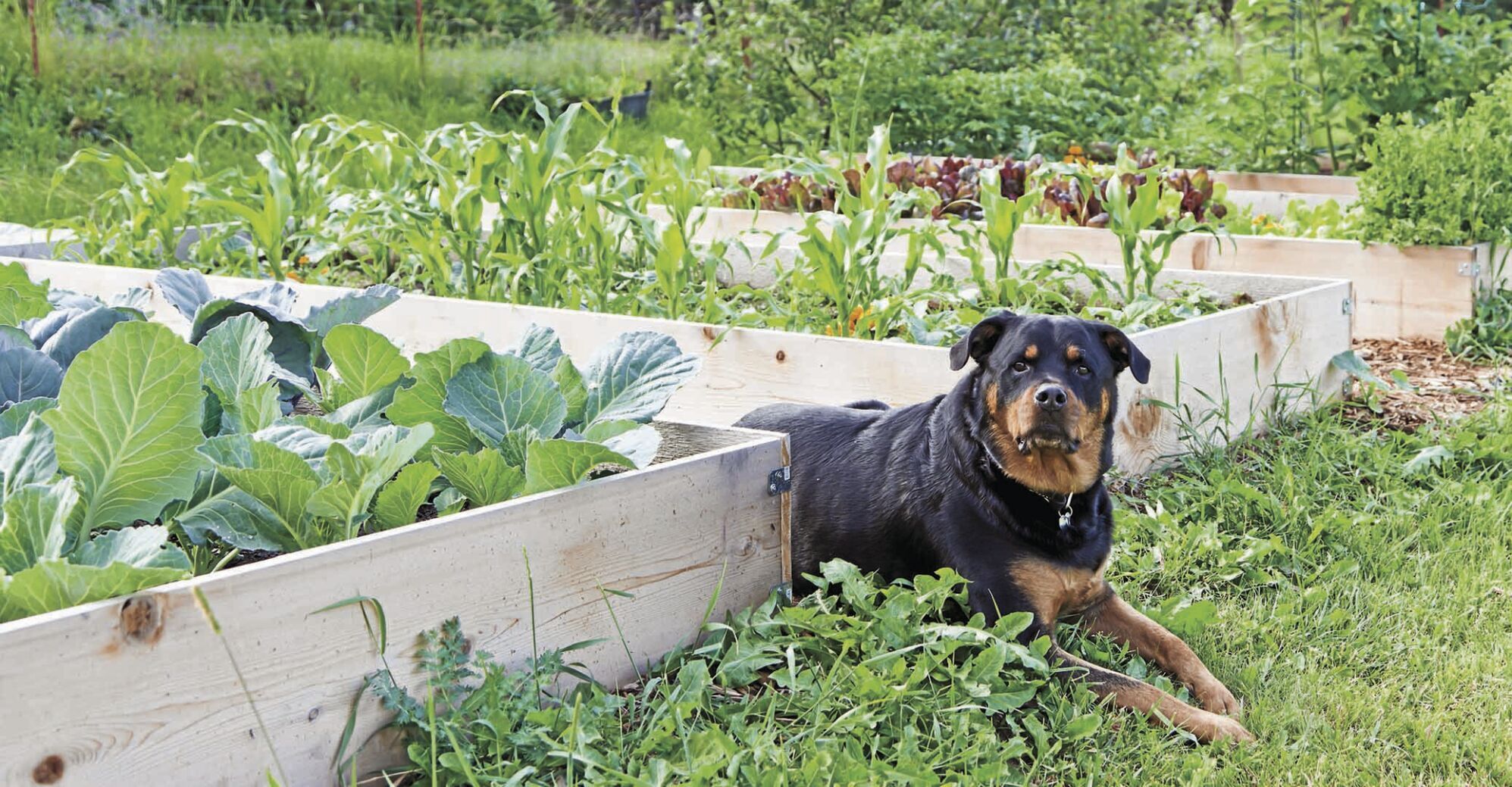Dog-friendly gardens: How to plant a plot safe for your pups

Dreamstime
In planning a pet-safe garden, it’s best to use fences, borders or plant boxes to prevent your dogs (or outside wildlife) from accessing your plants.
If you have a green thumb and a pet, you’ll want to make sure that the garden plants and materials you choose are safe — many are dangerous or even potentially deadly to your pets.
To help keep your dog and your garden safe, here are four things to consider, with tips from the American Kennel Club, plus a list of some dog-safe garden plants.
Garden boundaries
In planning a pet-safe garden, it’s always best to start by using fences, borders and plantings for safety and security to prevent your dogs (or outside wildlife) from accessing your plants.
Some dogs are climbers, and some are diggers. Install an underground barrier made from rebar, chicken wire or concrete to help prevent digging dogs from getting into the garden area.
Fertilizers
Use safe fertilizers so that the accidental ingestion of fertilizer isn’t as hazardous to your pet. Read all instructions because harmful substances can cause side effects from irritation and ulceration to the mouth, gums, esophagus and stomach to burns due to direct contact.
If you suspect your dog has eaten fertilizer, or they seem ill after spending time in the garden, take them to the vet right away.
Mulch types
Make sure the mulch you’re using in your garden is dog-safe. Wood-based, untreated mulches such as pine, cedar and cypress are good options, and opt for small chips that are easy on your dog’s paws. Cocoa mulch, while a popular choice, is not recommended for homes with dogs because cocoa beans are more susceptible to mold, which can cause gastrointestinal problems or even be fatal.
Toxic plants
Avoid toxic plants completely, even if your dog isn’t the type to normally chew or graze.
Don’t fall for the myth that dogs instinctively avoid dangerous plants. While it is sometimes true of animals in the wild, dogs have no ability to distinguish between safe and unsafe plants. Almost anything within your dog’s reach will be tested by your pet, especially by curious puppies.
The best cure is prevention — even drinking water from a vase that held a toxic plant could be enough to give your dog diarrhea, vomiting or worse. Make sure you check out plant guides to ensure that what you’re planting is dog-friendly before you plant it.
If you suspect your dog has eaten a toxic plant, take the following steps:
- Contact your vet, AKC Vetline or the Pet Poison Helpline (855-764-7661) immediately for accurate advice. (You will be charged a fee when you call the helpline.)
- Try to identify the plant by taking a sample or a photo or by collecting the dog’s vomit in a plastic bag.
- When you reach the vet or helpline, provide as much information as possible, including:
— The suspected plant and the time of ingestion
— Your dog’s weight
— Any symptoms your dog is showing
- Under no circumstances should you induce vomiting unless instructed to do so by the vet. Specific plant poisons require specific treatments, and vomiting can make some cases worse.
Some dog-safe garden plants
Keep in mind that these plants are safe in small quantities. Always monitor your dogs in the garden.
- Green beans
- Berries like blueberries, raspberries or strawberries
- Barley grasses
- Herbs like rosemary, basil, thyme, dill, fennel and sage
- Dandelion greens
- Curly-leaf parsley
- Squash
- Beets
- Cucumber
Some toxic plants
- Onions
- Tomato plant leaves
- Garlic
- Hops
- Herbs like mint and oregano
- Spring parsley
- Rhubarb
Sources: American Kennel Club, ASPCA
